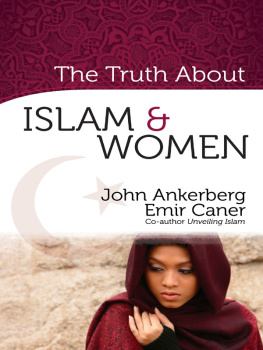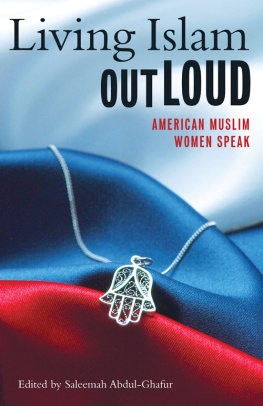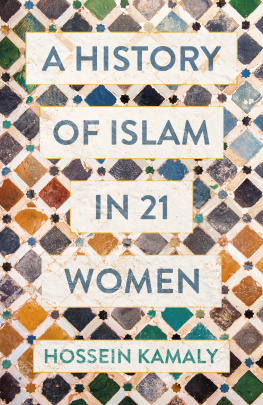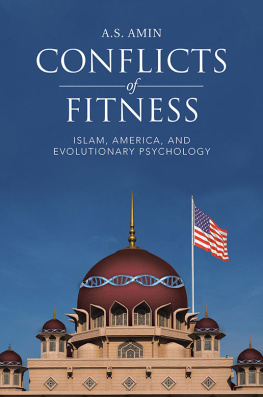Contents
Guide
Pagebreaks of the print version
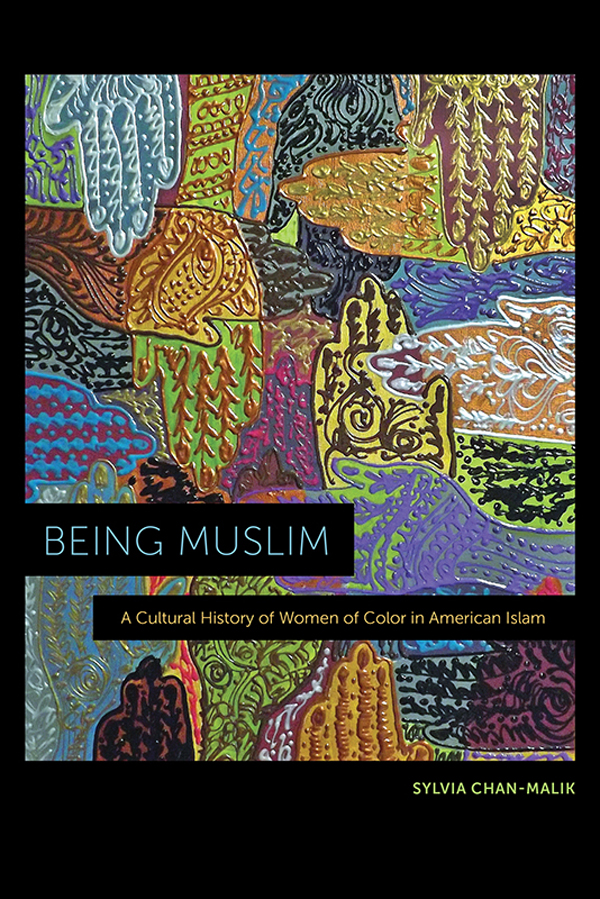
BEING MUSLIM
Being Muslim
A Cultural History of Women of Color in American Islam
Sylvia Chan-Malik

NEW YORK UNIVERSITY PRESS
New York
NEW YORK UNIVERSITY PRESS
New York
www.nyupress.org
2018 by New York University
All rights reserved
References to Internet websites (URLs) were accurate at the time of writing. Neither the author nor New York University Press is responsible for URLs that may have expired or changed since the manuscript was prepared.
Library of Congress Cataloging-in-Publication Data
Names: Chan-Malik, Sylvia, author.
Title: Being Muslim : a cultural history of women of color in American Islam / Sylvia Chan-Malik.
Description: New York : New York University Press, 2018. | Includes bibliographical references and index.
Identifiers: LCCN 2017044860| ISBN 9781479850600 (cl : alk. paper) | ISBN 9781479823420 (pb : alk. paper)
Subjects: LCSH: Muslim womenUnited States. | African American women. | Muslims, Black.
Classification: LCC HQ 1170 . C 486 2018 | DDC 305.48/697dc23
LC record available at https://lccn.loc.gov/2017044860
New York University Press books are printed on acid-free paper, and their binding materials are chosen for strength and durability. We strive to use environmentally responsible suppliers and materials to the greatest extent possible in publishing our books.
Manufactured in the United States of America
10 9 8 7 6 5 4 3 2 1
Also available as an ebook
For my daughters and Badi
CONTENTS
Introduction
Being Muslim Women
This is a book about being Muslim. More precisely, this is a book about how women of color, primarily within, but not limited to, the United States, have crafted modes of Muslim being and practice that constitute critical histories of Islamic life and culture in the twentieth- and twenty-first-century United States. At the same time, this is a book about how women of color have continually shaped Islams presence in the nations racial and gendered imaginaries during this time and how women and issues of race and gender are essential to understanding Islams cultural meanings in the United States. Stated another way, Being Muslim is an exploration of womenprimarily Black, but also Asian, Arab, Latino, African diasporic, white, and multiracialproducing Muslim-ness as a way of racial, gendered, and religious beingfor example, as both American and global subjects, as U.S. Muslims, and as part of the ummah , the global community of believers. This book is also an investigation of Islams significant historical-cultural presence in the twentieth- and twenty-first-century United States as a religion, political ideology, and racial marker, with a focus on how this has been produced and signified by women.
A series of questions drives its inquiry: How do we tell a story of Islam in the United States that foregrounds the lives, labors, presence, and perspectives of women of color throughout the twentieth and twenty-first centuries? How does a focus on women of color produce alternative narratives of Muslim life and Islams historical presence in the United States? How have Black women shaped histories of American Islam, and what are the legacies of their labors? What is the role of race in the formation of U.S. Muslim womens religious practices and cultural expression, and how have desires for agency and discourses of feminism influenced U.S. Muslim womens lives? How have Muslim women in the United States engaged questions of social justice and struggles for freedom through Islam? How do race and gender shape modes of religious practice and identity construction? Finally, is it possibleor for that matter, necessaryto articulate a collective experience of being Muslim women in America across time, space, and racial difference? If so, what does this experience tell us? And what is at stake in its telling?
In its response to these queries, Being Muslim: A Cultural History of Women of Color in American Islam presents a series of previously untold or underexplored narratives that explore U.S. Muslim womens lives, subjectivities, representations, and voices during the last century. In the existing literature on American Islam, mens voices and perspectives dominate. Further, in the handful of texts addressing U.S. Muslim womens issues, there is generally a separation between the stories of Black American and non-Black American Muslim women, who are primarily Arab and South Asian American, although not at all exclusively. Such language enacts an erasure of the lives and representations of Black Muslim women (who are already American) and generally relegates their experiences to a separate chapter or section, as opposed to situating them as a central component of Islams historical narrative in the United States. In addition, becoming American also marginalizes the experiences of many Latina and white female converts, who are also already American.
In Being Muslim , I instead place these varied narratives on a historical continuum and argue that a desire for gender justice as expressed and conceived of by women of color has continually impelled and informed the construction of U.S. Muslim womens lives. While a number of scholars have noted Islams affiliations with movements of Black liberation, antiracism, and anti-imperialism in the United States, are emerging in the contemporary United States.
Although a great deal of this books focus is on the experiences and representations of Black American Muslim women, Being Muslim refuses balkanizing logics that might lead some to call this a book about only Black American Muslim women, as opposed to U.S. Muslim women. Indeed, I devote much of my focus herethe first three chapters, to be preciseto investigations of Black American Muslim womens lives owing to the realities of the historical record; prior to the 1960s, almost all U.S. Muslim women who appeared in the press or popular culture were African American. Thus, any historically accurate account of American Islam and U.S. culture must necessarily make central the lives and experiences of Black American Muslimsand in this case, Black American Muslim womenas their contributions have forcefully shaped the meanings and presence of Islam in the United Stated. Instead of stories of Muslims becoming American, I suggest that narratives of being Muslim in America are far more flexible (and less exclusionary) in how they are applicable to approaching all U.S. Muslim womens subjectivities across racial and ethnic categoriesand I detail the contexts and processes that women have historically and culturally configured their identities and practices as U.S. Muslims. Whether one is a third-generation Black American Muslim, a recent immigrant from Pakistan, a Mexican American convert, or a Syrian refugee, posing the question of how to be a Muslim woman in the United States offers insights, I suggest, into how Muslim-ness is produced and sustained against white, Christian social and cultural norms, as well as allowing us to see how Islamic identities and practices have evolved in relation to the shifting political exigencies of out times. As such, Being Muslim brings together a series of explorations of U.S. Muslim womens lives that begins with stories of Black American women and their engagements with Islam as a spiritually embodied practice of social protest. This book moves on a story of the encounter between Islam and feminism in the media during the late twentieth century, as signified through the bodies of Middle Eastern, white, and Black American women, and it closes with a look into how women of color feminism and womanism shape expressions of Islamic feminism in the lives of contemporary U.S. Muslim women across racial, class, generational, and regional lines. Because I suggest that the legacies of early twentieth-century Muslim women, such as those featured in the first three chapters, shape present-day formations of being Muslim, the book proceeds chronologically, to show how being Muslim in the United States is an iterative and reiterative practice that arises out of racial and gendered structures of feelings within the domestic United States, as well as through the diverse transnational locales and diasporic cultural spaces that constitute U.S. American Islam.



